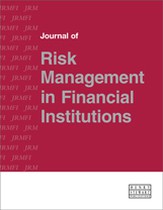Exposure exchange agreements among multilateral development banks for sovereign exposures: An innovative risk management tool
Abstract
Until now, multilateral development banks (MDBs) have had only limited options to manage concentration risk: they either had to reduce lending to countries with high concentration, or allocate additional capital to cover the related concentration risk, the latter potentially requiring capital increases. The ability to exchange exposures between MDBs via exposure exchange agreements (EEA) represents an important innovation in risk management for the entire MDB community as it substantially improves the collective financial capacity and development effectiveness of the MDB community. After two years of development, the framework for exchanging exposure between MDBs was approved by the Boards of the African Development Bank (AfDB), the Inter-American Development Bank (IADB) and International Bank for Reconstruction and Development (IBRD) in November 2015 and the first three MDB EEA transactions were signed between these institutions on 15th December, 2015. This paper provides the financial rationale behind exchanging exposure between MDBs and outlines key elements of the framework.
The full article is available to subscribers to the journal.
Author's Biography
Riadh Belhaj joined the African Development Bank in 2010 as Principal Financial Risk Officer in charge of credit risk modelling and Capital Adequacy framework. Prior to 2010, Riadh was Senior Credit Risk Analyst at Banque de France and associate professor of finance at the Conservatoire National des Arts et Métiers in Paris. Riadh received his Master degree and PhD from Sorbonne University and published articles on credit risk and portfolio optimization in several peer-review journals.
Merli Baroudi is the Chief Credit Officer of the International Bank for Reconstruction and Development. Since 2003 she has been responsible for managing the country credit risk inherent in the Bank’s portfolio and for ensuring that these risks are commensurate with IBRD’s financial capacity and risk tolerance. She is also responsible for monitoring countries that are vulnerable to crisis and contributes in formulating the Bank’s response. Prior assingments include Director of the Country Risk Service at the Economist Group in London, and establishing Chase Manhattan Bank’s proprietary overseas investment portfolio as well as advising the bank’s asset-liability management committee. Merli is a graduate of Smith College, Columbia University and the School of African and Oriental Studies in London.
Norbert Fiess is the Lead Economist in the Global Practice of Macroeconomics and Fiscal Management of the World Bank Group. Prior World Bank assignments include Principal Economist and Credit Risk Head in the Credit Risk Department, and Senior Country Economist for Argentina, Chile and Uruguay. Other professional experiences include academia and investment banking. Norbert holds a PhD in Economics from the University of Strathclyde, Scotland.
Jonas Campino De Olivera a citizen of Brazil and Portugal, is a senior strategic risk specialist in the Office of Risk Management at the Inter-American Development Bank in Washington, DC. Mr Campino holds a PhD and an MBA in International Business Management from The George Washington University. He also holds an MA in International Trade and Investment Policy from the Elliott School of International Affairs at GWU, and a BA in Economics from the University of Maryland at College Park.
Frank Sperling Unit Chief for Strategic Risk at the Inter-American Development Bank, is a leader the management of financial risk through the design and implementation of innovative solutions in the areas of capital adequacy, profitability and balance sheet management. He has an MBA in International Business for the George Washington University as well as master degrees in Engineering and Engineering Management. He holds a certification as FRM and served as regional co-director for GARP.
Tim Turner is currently a business continuity programme manager for a large multinational corporation. He has been responsible for implementing the human resources business continuity programme since its inception, following the September 11th attacks. Over the past five years, he has managed small to largescale emergencies around the world, including hurricanes, earthquakes, SARS pandemic, fires, SQL virus, war, tsunami, bombings, winter storms, etc. He is married with six children (the biggest test of his emergency planning skills, by far), has an MBA from Brigham Young University, and has a great deal of experience in presenting to internal and external audiences.
Citation
Belhaj, Riadh, Baroudi, Merli, Fiess, Norbert, Olivera, Jonas Campino De, Sperling, Frank and Turner, Tim (2017, February 1). Exposure exchange agreements among multilateral development banks for sovereign exposures: An innovative risk management tool. In the Journal of Risk Management in Financial Institutions, Volume 10, Issue 1. https://doi.org/10.69554/YLZQ2429.Publications LLP
